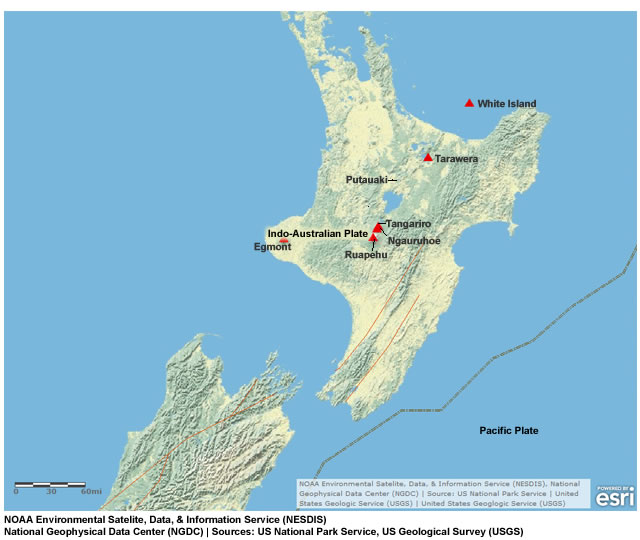Volcanic Regions
Most of the explosive volcanism in the world occurs along the circum-Pacific “Ring of Fire.” As seen in the image below, the Ring of Fire is defined by a nearly continuous series of oceanic trenches, island arcs, and volcanic mountain ranges and/or boundaries of several plates. It encircles the periphery of the Pacific Ocean Basin.

The Philippines, Indonesia, the islands of Japan, the Alaskan and Cascade Range volcanoes are all part of the circum-Pacific Ring of Fire. Along the northern periphery of the Ring of Fire, essentially from Kamchatka Peninsula to southeast Alaska, 97 eruptions occurred between 1970 and 2008. These eruptions ejected volcanic ash to more than 20000 ft (>6 km). In some instances, the activity lasted several weeks or even months and required a separate hazard response. Thus, there were “approximately 300 explosive eruptions that resulted in plumes at altitudes greater than 6 km over those 38 years” (Dean, Dehn, 2011).
Not all volcanoes occur along the Ring of Fire, or even along subduction zones. There are several other areas in the world with active volcanoes, like Iceland and Italy. In all instances, however, prevailing winds can carry the ash from an explosive eruption through both adjacent and distant routes thereby disturbing air traffic and other human activities.
Africa is an interesting continent with respect to volcanic activity. Most volcanoes in Africa result from hot spots along and near the East African rift, which is a developing divergent plate boundary running 6400 km mainly north-south from Jordan through East Africa to Mozambique. The rift is a very active region, averaging 50-64 km wide. Geologists surmise that if the spreading along the East Africa rift continues, the three plates that meet at the edge of the present-day African continent will separate completely, allowing the Indian Ocean to flood the area and turning the Horn of Africa into a large island.

Volcanoes are also present along the west coast of Africa. Perhaps the best known of these are Tenerife, Palma, and Lanzarote, and Mount Cameroon and its satellite peak Etinde. On Mount Cameroon, moderate eruptions have occurred from both summit and flank vents. The US Geological Survey reports that the last eruption, in October-November 1982, produced lava fountaining from a radial fissure 6.5 kilometers southwest of the summit. A lava flow moved 12 kilometers down the southwest flank causing tephra damage to plantations and requiring the evacuation of two towns.
New Zealand is located at the colliding edges of the Pacific and Australian plates. To the northeast of New Zealand, the Kermadec Ridge is a chain of mainly submarine volcanoes formed above the subduction zone by melting of the oceanic Australian Plate. Close to New Zealand, the Australian Plate changes from oceanic to continental crust and the Kermadec Ridge merges into the Taupo Volcanic Zone. This zone is home to multiple volcanoes: Mount Egmont, Ruapehu, Ngauruhoe, Tongariro, Mt Edgecumbe (Putauaki), Tarawera. and White Island (Whakaari).

Question
Of the three types of plate boundaries, which produces the most explosive volcanism? (Choose the best answer.)
The correct answer is a).
Convergent boundaries are prone to explosive volcanic eruptions because they allow magma to percolate upward and form pockets that can serve as magma sources for volcanoes. Divergent plate boundaries are also volcanically active but many of these eruptions occur along the ocean floor where their impact is minimal. Next, we will learn more about different eruption types.
